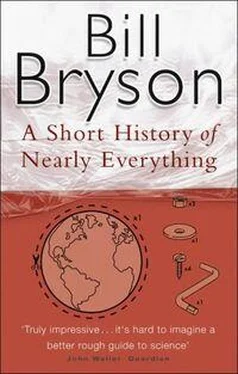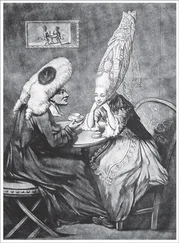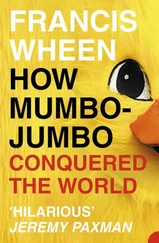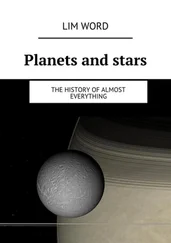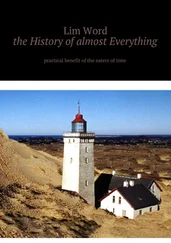Aware that his finding would entirely upend what was understood about the past, and urged by his friend the Reverend William Buckland-he of the gowns and experimental appetite-to proceed with caution, Mantell devoted three painstaking years to seeking evidence to support his conclusions. He sent the tooth to Cuvier in Paris for an opinion, but the great Frenchman dismissed it as being from a hippopotamus. (Cuvier later apologized handsomely for this uncharacteristic error.) One day while doing research at the Hunterian Museum in London, Mantell fell into conversation with a fellow researcher who told him the tooth looked very like those of animals he had been studying, South American iguanas. A hasty comparison confirmed the resemblance. And so Mantell’s creature became Iguanodon , after a basking tropical lizard to which it was not in any manner related.
Mantell prepared a paper for delivery to the Royal Society. Unfortunately it emerged that another dinosaur had been found at a quarry in Oxfordshire and had just been formally described-by the Reverend Buckland, the very man who had urged him not to work in haste. It was the Megalosaurus, and the name was actually suggested to Buckland by his friend Dr. James Parkinson, the would-be radical and eponym for Parkinson’s disease. Buckland, it may be recalled, was foremost a geologist, and he showed it with his work on Megalosaurus. In his report, for the Transactions of the Geological Society of London , he noted that the creature’s teeth were not attached directly to the jawbone as in lizards but placed in sockets in the manner of crocodiles. But having noticed this much, Buckland failed to realize what it meant: Megalosaurus was an entirely new type of creature. So although his report demonstrated little acuity or insight, it was still the first published description of a dinosaur, and so to him rather than the far more deserving Mantell goes the credit for the discovery of this ancient line of beings.
Unaware that disappointment was going to be a continuing feature of his life, Mantell continued hunting for fossils-he found another giant, the Hylaeosaurus, in 1833-and purchasing others from quarrymen and farmers until he had probably the largest fossil collection in Britain. Mantell was an excellent doctor and equally gifted bone hunter, but he was unable to support both his talents. As his collecting mania grew, he neglected his medical practice. Soon fossils filled nearly the whole of his house in Brighton and consumed much of his income. Much of the rest went to underwriting the publication of books that few cared to own. Illustrations of the Geology of Sussex , published in 1827, sold only fifty copies and left him £300 out of pocket-an uncomfortably substantial sum for the times.
In some desperation Mantell hit on the idea of turning his house into a museum and charging admission, then belatedly realized that such a mercenary act would ruin his standing as a gentleman, not to mention as a scientist, and so he allowed people to visit the house for free. They came in their hundreds, week after week, disrupting both his practice and his home life. Eventually he was forced to sell most of his collection to pay off his debts. Soon after, his wife left him, taking their four children with her.
Remarkably, his troubles were only just beginning.
In the district of Sydenham in south London, at a place called Crystal Palace Park, there stands a strange and forgotten sight: the world’s first life-sized models of dinosaurs. Not many people travel there these days, but once this was one of the most popular attractions in London-in effect, as Richard Fortey has noted, the world’s first theme park. Quite a lot about the models is not strictly correct. The iguanodon’s thumb has been placed on its nose, as a kind of spike, and it stands on four sturdy legs, making it look like a rather stout and awkwardly overgrown dog. (In life, the iguanodon did not crouch on all fours, but was bipedal.) Looking at them now you would scarcely guess that these odd and lumbering beasts could cause great rancor and bitterness, but they did. Perhaps nothing in natural history has been at the center of fiercer and more enduring hatreds than the line of ancient beasts known as dinosaurs.
At the time of the dinosaurs’ construction, Sydenham was on the edge of London and its spacious park was considered an ideal place to re-erect the famous Crystal Palace, the glass and cast-iron structure that had been the centerpiece of the Great Exhibition of 1851, and from which the new park naturally took its name. The dinosaurs, built of concrete, were a kind of bonus attraction. On New Year’s Eve 1853 a famous dinner for twenty-one prominent scientists was held inside the unfinished iguanodon. Gideon Mantell, the man who had found and identified the iguanodon, was not among them. The person at the head of the table was the greatest star of the young science of paleontology. His name was Richard Owen and by this time he had already devoted several productive years to making Gideon Mantell’s life hell.
Owen had grown up in Lancaster, in the north of England, where he had trained as a doctor. He was a born anatomist and so devoted to his studies that he sometimes illicitly borrowed limbs, organs, and other parts from cadavers and took them home for leisurely dissection. Once while carrying a sack containing the head of a black African sailor that he had just removed, Owen slipped on a wet cobble and watched in horror as the head bounced away from him down the lane and through the open doorway of a cottage, where it came to rest in the front parlor. What the occupants had to say upon finding an unattached head rolling to a halt at their feet can only be imagined. One assumes that they had not formed any terribly advanced conclusions when, an instant later, a fraught-looking young man rushed in, wordlessly retrieved the head, and rushed out again.
In 1825, aged just twenty-one, Owen moved to London and soon after was engaged by the Royal College of Surgeons to help organize their extensive, but disordered, collections of medical and anatomical specimens. Most of these had been left to the institution by John Hunter, a distinguished surgeon and tireless collector of medical curiosities, but had never been catalogued or organized, largely because the paperwork explaining the significance of each had gone missing soon after Hunter’s death.
Owen swiftly distinguished himself with his powers of organization and deduction. At the same time he showed himself to be a peerless anatomist with instincts for reconstruction almost on a par with the great Cuvier in Paris. He become such an expert on the anatomy of animals that he was granted first refusal on any animal that died at the London Zoological Gardens, and these he would invariably have delivered to his house for examination. Once his wife returned home to find a freshly deceased rhinoceros filling the front hallway. He quickly became a leading expert on all kinds of animals living and extinct-from platypuses, echidnas, and other newly discovered marsupials to the hapless dodo and the extinct giant birds called moas that had roamed New Zealand until eaten out of existence by the Maoris. He was the first to describe the archaeopteryx after its discovery in Bavaria in 1861 and the first to write a formal epitaph for the dodo. Altogether he produced some six hundred anatomical papers, a prodigious output.
But it was for his work with dinosaurs that Owen is remembered. He coined the term dinosauria in 1841. It means “terrible lizard” and was a curiously inapt name. Dinosaurs, as we now know, weren’t all terrible-some were no bigger than rabbits and probably extremely retiring-and the one thing they most emphatically were not was lizards, which are actually of a much older (by thirty million years) lineage. Owen was well aware that the creatures were reptilian and had at his disposal a perfectly good Greek word, herpeton , but for some reason chose not to use it. Another, more excusable error (given the paucity of specimens at the time) was that dinosaurs constitute not one but two orders of reptiles: the bird-hipped ornithischians and the lizard-hipped saurischians.
Читать дальше
